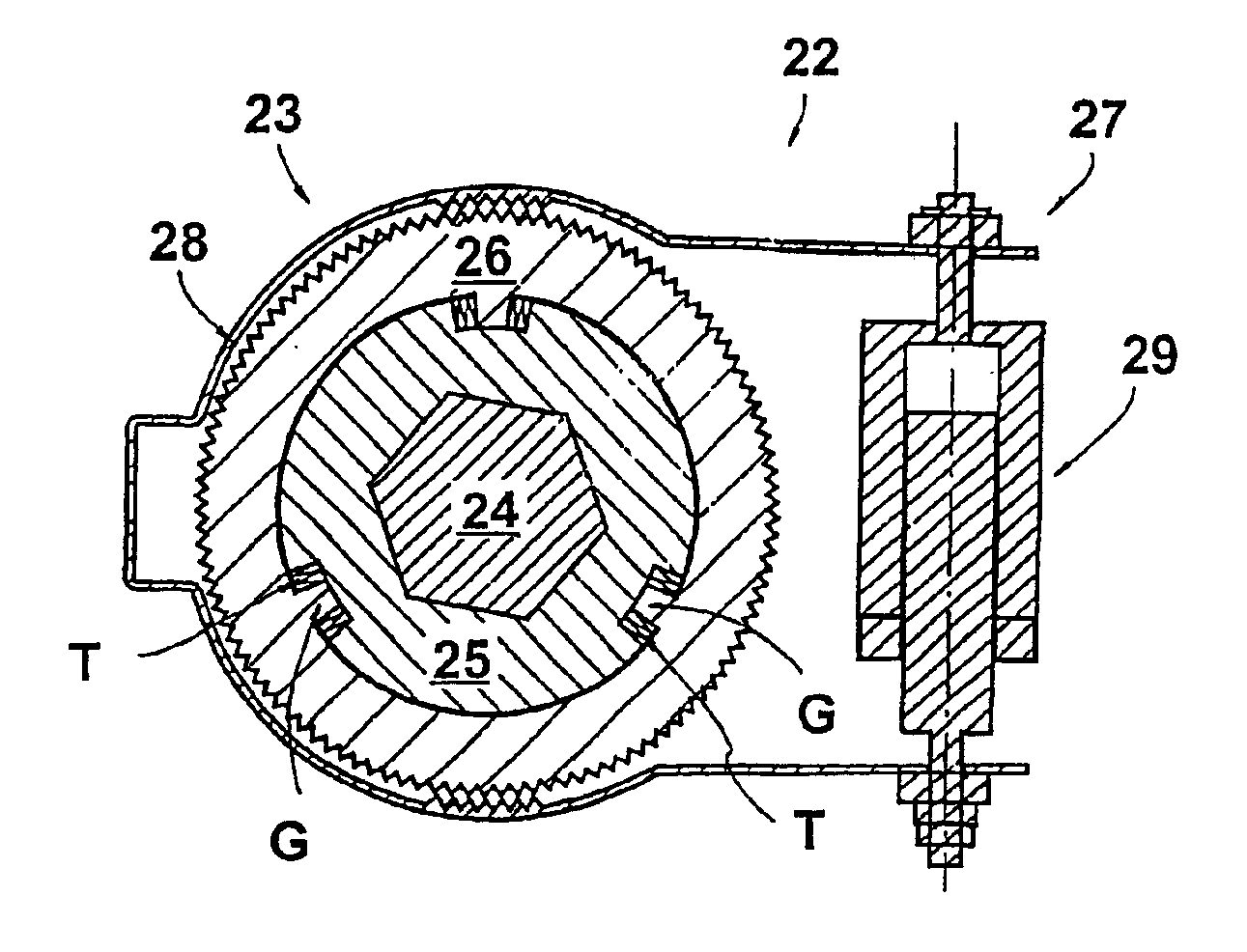Rotating actuator
a technology of rotating actuators and actuators, applied in the direction of mechanical control devices, gearing, instruments, etc., can solve the problems of high current consumption, inability to enable or disable haptic interfaces, and inability to reverse haptic interfaces, so as to prevent undesired control shaft movements
- Summary
- Abstract
- Description
- Claims
- Application Information
AI Technical Summary
Benefits of technology
Problems solved by technology
Method used
Image
Examples
Embodiment Construction
)
Referring now to FIG. 1, a rotating actuator 1 in accordance with the present invention is shown. Rotating actuator 1 includes a rotatable control shaft 2 at the operator end, of which a turning knob 3 is provided as a handle. Control shaft 2 passes through a mask 4 so that the control shaft segments located below turning knob 3 are covered by the mask.
Rotating actuator 1 also includes a haptic perception signal generating device 5 (i.e., haptic interface-generating device). In the embodiment depicted in FIG. 1, haptic interface-generating device 5 includes, for example, two latching cam plate rings 6 and 7, a brake flange 8 connected to control shaft 2, and latching sleeve assemblies 9 and 10. Latching sleeve assemblies 9 and 10 are offset by 90° relative to each other and each include two opposed latching bolts 12 and 12′. Latching bolts 12 and 12′ are placed opposite to each other and are braced against each other by a compression spring 11. Latching bolts 12 and 12′ are each ar...
PUM
 Login to View More
Login to View More Abstract
Description
Claims
Application Information
 Login to View More
Login to View More - R&D
- Intellectual Property
- Life Sciences
- Materials
- Tech Scout
- Unparalleled Data Quality
- Higher Quality Content
- 60% Fewer Hallucinations
Browse by: Latest US Patents, China's latest patents, Technical Efficacy Thesaurus, Application Domain, Technology Topic, Popular Technical Reports.
© 2025 PatSnap. All rights reserved.Legal|Privacy policy|Modern Slavery Act Transparency Statement|Sitemap|About US| Contact US: help@patsnap.com



